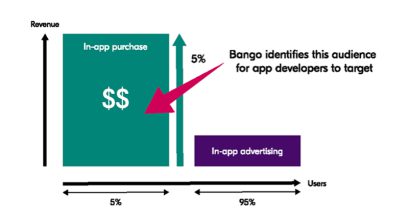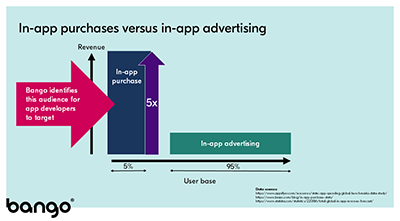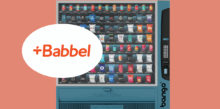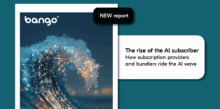App developers and marketing spend
by Sukey Miller | 28 May 2019

Drive your Google Play revenues through app developer partnerships – Part 2
With the right tools, mobile operators become a crucial ingredient in today’s app economy, enabling app developers to successfully acquire, engage and monetize mobile subscribers.
Here we serialize the latest Bango guide for operators which explains how leveraging Direct Carrier Billing (DCB) insights opens-up new partnership opportunities with leading game and app developers to:
- Attract new customers to DCB
- Introduce significant new marketing revenues in addition to your DCB revenue
- Optimize your own customer communications and marketing success
- Increase the volume and value of DCB payments through Google Play
Drive your Google Play revenues through app developer partnerships – Part 2
App developers and marketing spend
App developers want to maximize revenues so will always try to guide their customers towards the lowest payment processing costs, if given the choice.
In contrast app developers invest huge sums on marketing to acquire customers. Often, over 50% of their revenues are reinvested in user acquisition on an ongoing basis. The strategy is to acquire at great scale and then monetize through in-app advertising and in-app purchases.
Upfront payments, to purchase the app, are usually seen as a blocker – most customers want to try the app first and expect some aspect to be ‘free’. Freemium apps have become common-place as a result, along with the rise of advertising funded use. These ad-funded apps often encourage customers to buy the full product, premium version or in-app content and add-ons. The alternative is that they show advertising, either to convince customers to upgrade, or to generate some basic revenue.
However, on average more than 5x of revenue is generated by just 5% of customers (as low as 1% in some countries) who make in-app purchases, compared to the remaining 95% of ad-funded customers. So, finding those customers more likely to pay is critical to a successful business model for app developers and attracts a significantly higher app developer marketing investment.

Most app developer advertising today focuses on app installs (initial focus on maximizing land grab and monetize later). App developers use demographic profiling, often with Facebook, to target customers likely to install their app. It’s a high volume, low-price, low quality strategy designed to generate a high number of installs. App developers then rely on a small percentage of acquired customers to go on to pay or subscribe. Often less than 2 % will convert into paying customers.
The ability to focus marketing spend on customers more likely to buy is of significant value to app developers and they are prepared to pay a premium for these improved results. But traditionally it is very difficult to identify customers more likely to buy their app or content. Insights into customers and their payment preferences are almost non-existent.
Mobile operators and DCB add significant value to app developers
App developers will continue to pay for cheap, high-volume, low-quality audiences because there are no clear alternatives that offer better results today. But of the $billions spent by app developers on marketing in 2018, virtually none was spent with mobile operators.
However, mobile operators are well positioned to change all this. Operators have deep local customer knowledge that app developers need, especially when initially entering a new country or market for the first time. In that instance app developers can, and should, localize their apps, but need a better way for them to reach out to the market which mobile operators can provide.
Mobile operators are the best partners for app developers to enter a new market and grow users in existing markets. Local knowledge, market insights and experience processing DCB payments for app stores is unique and of massive value to app developers – both new and established. This is even more significant in markets where credit card usage is low, as mobile operators offer more insight into who is likely to pay and what products they buy.
Of the $billions spent by app developers on marketing in 2018, virtually none was spent with mobile operators.
…..Part 3 is coming soon. If you can’t wait, download the full guide here
Subscribe to our newsletter
Get the latest subscription bundling news and insights delivered straight to your inbox.



